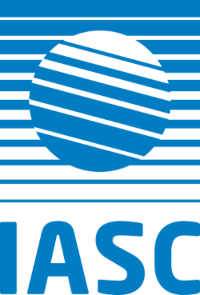 The “air Pollution in the Arctic: Climate, Environment and Societies” (PACES, https://pacesproject.org/) initiative aims to foster new research on the origins and fate of Arctic air pollution, how it impacts the climate, human health, and ecosystems. PACES also focuses on the feedback mechanisms between anthropogenic pollution and natural processes, the associated climate responses, and the impacts on society, including sustainable solutions, adaptation, and economic consequences.
The “air Pollution in the Arctic: Climate, Environment and Societies” (PACES, https://pacesproject.org/) initiative aims to foster new research on the origins and fate of Arctic air pollution, how it impacts the climate, human health, and ecosystems. PACES also focuses on the feedback mechanisms between anthropogenic pollution and natural processes, the associated climate responses, and the impacts on society, including sustainable solutions, adaptation, and economic consequences.
PACES coordinates international research efforts on these topics in collaboration with existing and planned activities and motivates trans-disciplinary research related to Arctic air pollution and its impacts. Around 40 scientists with interests in Arctic air pollution gathered in Helsinki, Finland, for the 5th PACES Open Science Meeting in June 2023, where recent research highlights and ongoing and planned activities within PACES and more broadly were discussed in-depth. Funding from both IASC and IGAC supported the attendance of 6 early career scientists. Scientific session themes included the global linkages between long-range transport, wildfires, and Arctic air pollution; the human and ecosystem health impacts of local Arctic air pollution, with a focus on the recent Alaskan Layered Pollution and Chemical Analysis (ALPACA) campaign; and the chemical and physical properties of Arctic aerosols.
More than 20 scientific presentations were given across these topics, with additional group discussion around plans for the future directions of PACES as well as a panel discussion between experienced and early career scientists about potential career paths in academia.
Discussion about the future directions of PACES was implemented using the World Café format (https://theworldcafe.com/key-concepts-resources/world-cafe-method/). The World Café is a simple yet effective method for conducting collaborative dialogue. Small groups of 4-5 participants were randomly selected for each question/topic of discussion. These questions included:
1. Which major scientific issues need to be addressed in the coming 10-15 years (benefiting from / enabled by international collaboration)?
Major threads of discussion centred around how the Arctic will respond to ice free conditions, including the natural baseline, anthropogenic activities (e.g., resource extraction and increased marine ship traffic), geoengineering solutions, and geopolitical issues involving claims to the newly accessible sea floor.
2. What observational activities and advances are needed to improve scientific knowledge and reduce model uncertainties?
Discussions were focused on identifying which model uncertainties are the most pertinent and how experimentalists can address them, aerosol/gas removal processes, micrometeorological measurements (e.g. boundary layer height estimation), cloud formation processes, development of high temporal/spatial resolution emissions inventories including satellite detection of small-scale wildfires emissions, and measurement of currently missing or derived variables (i.e., aerosol/cloud droplet pH, speciated VOC emissions). Additionally, little is known regarding the nitrogen budget in the arctic.
3. What will be the key scientific and technical advances / challenges that should inform the development of an IPY 2032-33 activity?
Key topics discussed include the state of Arctic sea ice during summer, improving the current detection limits of analytical instrumentation, choice of observing platform (increased use of drones and balloons for vertical measurements), interactions with local communities for citizen science, and improved geopolitical relations between Arctic nations. 4. Which policy-relevant science questions should PACES focus on addressing in the next 10-15 years?
The final question focused on addressing the following issues: impact of fire management policies, impact of air pollution on indigenous communities and ecosystems, impact of model uncertainty on assessment of climate risk, how climate hazards impact infrastructure (both in the mid-latitudes and in the Arctic), how to sustainably develop the Arctic, and the impact of changing Arctic population dynamics including climate refugees.
The panel discussion between experienced and early career scientists explored personal topics such as work-life balance, useful things to know before starting in academia, and which compromises are needed to fulfil one’s goals. Challenges faced by female scientists were discussed in depth, a key example is the necessity for females to work harder to achieve funding or to have their work respected than their male colleagues. It was clear that inequalities (including gender, race and disabilities) are still apparent in the atmospheric science community despite improvements in recent decades, and an emphasis was made on the importance of addressing and improving diversity within the community moving forwards. Another aspect explored by the panel discussion focused on the logistical side of procuring research funds including various funding agencies, getting appropriate feedback, the mental health side of dealing with proposal rejection, and the advantages of being on an evaluation panel. The overall message from the experienced to early career researchers was to be honest with yourself, stay curious and keep asking questions.
Some specific scientific highlights from the meeting included:
- Interesting new insights into health impacts related to wildfires and discussions of proposed future wildfire modelling projects.
- High latitude BC emissions from ice core data inversion. Dr Sabine Eckhardt delivered a presentation on work from her recent paper, ‘Revised historical Northern Hemisphere black carbon emissions based on inverse modeling of ice core records’ in Nature Communications. The revised emission inventory, which provides BC emissions during the period 1850-2000, is particularly sensitive to emissions in the Arctic region, as it was the source of the majority of the ice cores.
- Updates on the ALPACA fieldwork campaign. Five ALPACA related presentations were delivered on topics ranging from aerosol sources and composition to measurements of indoor air pollution caused by pellet stoves,which provided valuable insight into some of the latest observation and analysis techniques being used in high-latitude local air pollution science.
Photo courtesy of the organisers.
Date and Location:
6 – 8 June 2023 | Helsinki, Finland
IASC Working Group funding the Project:
- Atmosphere WG
Project Lead
Steve Arnold (University of Leeds, UK)
Year funded by IASC
2023
